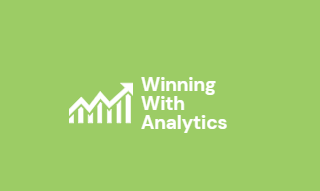Originally Written: June 2016
Executive Summary
- Sports analytics is all about using data analysis to provide actionable insight for coaches and sporting directors
- Sports analytics is concerned with more than just player recruitment; any tactics-related sporting decision can potentially benefit from relevant data analysis
- Sports analytics goes way beyond merely reporting KPIs and involves the analysis of trends and patterns in KPIs across games as well as identifying the most relevant KPIs to be tracked
- Sports analytics can only be effective if teams are fully committed to an evidence-based approach led by head coach and sporting director
“Analytics” is a one of a clutch of new terms including “data science” and “quants” that have emerged in the last decade to describe the use of data analysis to support decision making. To my mind, the essence of analytics is most succinctly captured by Mike Flowers, the first director of analytics for New York City, when he said that what he wanted was “actionable insight”. Analytics is analysis for purpose. It’s a servant function, there to help managers to make better informed decisions.
Analytics can be summed up by the three 3 D’s – Decision, Domain and Data. Analytics is decision-driven, domain-specific data analysis. And the 3 D’s capture the importance of both “hard” and “soft” skills for the effective data analyst. Yes the data analyst needs the hard analytical skills, able to apply the tools of statistics and operations research (OR). But just as vital are the soft people skills, the ability to engage with the decision makers to tap into their knowledge and experience of the specific contexts and to understand the problems they face. An effective data analyst must engage with the decision makers to be able to structure operational problems as analytical problems, and then be able to feedback relevant recommendations for action based on their analysis.
When it comes to sports analytics, I find it most useful to adopt a narrow definition of sports analytics as the analysis of tactical data to support tactics-related sporting decisions. This narrow definition captures the uniqueness and the innovatory nature of sports analytics as the analysis of tactical performance data. It separates sports analytics from the more general business application of analytics to the ticketing, marketing and other business operations of pro sports teams. And the focus on tactical data analysis distinguishes sports analytics from data analysis that has long been a part of the day-to-day operations of strength and conditioning, medical and other sports science functions within teams. Data analysis is nothing new in pro sports teams but sophisticated statistical analysis of tactical performance data is very new.
Although I have defined sports analytics narrowly as focussing on the analysis of tactical performance data, it is important also to stress the range of applications of sports analytics within teams. We all know the Moneyball story and how the Oakland A’s in baseball used analytics to gain a competitive advantage in player recruitment. But once you move from striking-and-fielding sports into the invasion-territorial sports such as the various codes of football, rugby, hockey and basketball, there is a wide range of tactics-related sporting decisions that can benefit from data analysis. Traditional video-based approaches to opposition analysis, deciding on game plans and team selection, and setting training priorities can be complemented by data analysis. Video-based analysis provides depth but is necessarily limited in coverage given time constraints. Data analysis can provide width of coverage and, if done well, can help focus attention on those aspects of games that need further detailed video analysis.
Not only should sports analytics be seen as more than just a data-based approach to player recruitment, sports analytics should also be seen as going way beyond merely reporting key performance indicators (KPIs). Reporting KPIs, particularly graphical displays in the form of dashboards, are standard database management tools in the business world. Business consultants have seized on the commercial opportunity to offer these reporting tools to both the business and sporting operations of pro sports teams. But sports analytics is much more than just reporting sport-specific KPIs. Sports analytics involves working interactively with coaches and sporting directors to identify the most relevant KPIs to be tracked for your own players as well as opposition KPIs and KPIs for potential recruits. Sports analytics also involves analysing trends and patterns in KPIs across games to provide coaches with actionable insights.
Sports analytics offers massive scope to help inform sporting decisions. But it can only be effective if teams are fully committed to an evidence-based approach to player recruitment and other sporting decisions. And an evidence-based approach to decision making can only become an integral part of a team’s culture, of its way of doing things, if an evidence-based approach is championed by the head coach and sporting director, and if there is buy-in throughout the coaching staff, the support staff and the players. It requires a willingness to base decisions on systematic analysis, both video and data analysis, rather than relying on selected personal anecdotes. Evidence-based approaches such as sports analytics will never work if the decision-maker is a know-it-all. Know-it-all’s don’t need evidence and analytics to tell them what they already know with certainty. Ultimately an evidence-based approach and the adoption of analytics requires a degree of humility, a recognition of the limitations to your knowledge and experience, and a continual desire to learn and acquire new knowledge.
